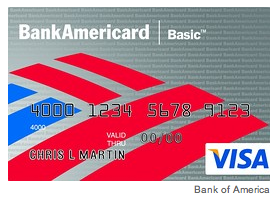By Lynnette Khalfani-Cox, The Money Coach
Anyone living in today’s society knows that it can be a drag to be turned down for credit. It’s no fun when your application for a car loan, a student loan, a mortgage, or even just a credit card is denied.
Learn how to boost your credit standing by knowing the ins and outs of how your score is determined by Fair Isaac Corp., the company that calculates your FICO credit score.
Here are 6 guidelines to help you maximize your credit score:
1. Pay Your Bills on Time
Since the single-biggest component (35%) of your credit score is based on your payment track record, the best way to boost your credit score is to simply pay your bills on time. Not some of them; all of them. Even if you can only make minimum payments, that’s better than being late with a bill because late payments of 30 days or longer can drop your FICO score by 50 points or more.
2. Don’t Max Out Your Credit Cards
Some people mistakenly think that simply paying their bills on time each month will give them a stellar credit rating, but that’s not true. Your FICO score also considers how much credit you use on a regular basis.
Having a lot of debt signals that you are a potential risk for getting into financial trouble and not paying bills on time. If your credit cards are at or near their limits, you can raise your credit score by knocking down your balances.
In general, try to keep your balances to no more than 25% of your available credit limit. For instance, if you have a card with a $10,000 credit line, make sure you don’t carry a balance of more than $2,500 on that card. If you can pay off your credit cards each month, that’s even better. But if you can’t, it’s better to spread out debt over a few cards, to maintain lower balances, rather than max out any one card.
3. Get financial help with debt
Having lots of credit card debt lowers your credit score. So if you’re struggling to pay off debt or are living paycheck to paycheck, consider getting help from a trustworthy credit counseling agency.
One reputable resource is the National Foundation for Debt Management, a non-profit agency that negotiates with creditors, gets your interest rates lowered, and creates a plan to quickly get you out of debt.
For speedy help, contact NFDM at: http://enroll.nfdm.org/ or call them toll-free at 866-409-6336, and a HUD-approved credit counselor from NFDM will get back to you within 24-48 hours for a free, no-obligation assessment of your situation.
4. Keep Older, Established Accounts Open
It feels good to pay off a credit card and finally get that statement showing a zero balance. However, if you pay off a creditor, don’t make the mistake of closing that account because 15% of your FICO score is based on the length of your credit history. The longer a credit history you have, the better it is for your score.
5. Avoid “Bad” Forms of Credit
You’ve probably walked into a department store and been offered 10% off, or some other discount, just for opening up a credit card with that retailer, right? Did you take the bait? If so, realize that you might have hurt your credit score. Here’s why:
The FICO scoring model rates some forms of credit more favorably than others. For instance, the presence of a mortgage on your credit report will help your score, but too many consumer finance cards (i.e., the cards issued by department stores and retailers) can hurt it. For this reason, do yourself a favor and say “No” to those credit card offers from stores you patronize. Just use a major credit card, such as a Visa, MasterCard, American Express, or Discover Card, if you need to use credit to make your purchases.
6. Only Apply for Credit When You Truly Need It
Just because you get a pre-approved offer in the mail, or some telemarketer calls you to solicit for a credit card, doesn’t mean you should accept it.
You should only seek out credit when you absolutely need it because taking on too much new credit – or even just applying for it – will lower your credit score. Each time you apply for a loan, whether it is a credit card, an auto loan, a mortgage, or a student loan, the lender pulls your credit report and generates an “inquiry” on your credit file. That inquiry remains there for two years. One inquiry can drop your score as much as 35 points.
Also, beware that you may sometimes generate an inquiry without even knowing it! That happened to me, when I recently rented a car with Avis, using my debit card. Rental car companies frequently run your credit report if you use a debit card instead of a credit card. That single inquiry lowered my FICO score by 16 points.



You must be logged in to post a comment.